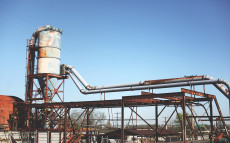- pathfindersAI
- Job Profile
Dental Assistants
Summary
Dental Assistants: A Comprehensive Career Guide
What They Do
Dental assistants play a crucial role in the efficient operation of dental practices. While their exact duties can vary depending on the practice and the needs of the dental professionals they support, the primary function of dental assistants is to provide assistance during dental procedures. This often includes preparing the patient for treatment, ensuring that all necessary tools are sterilized and in place, and providing real-time support to the dentist during procedures. Dental assistants also frequently take on administrative tasks, thereby ensuring that dental offices run smoothly and efficiently.
Job Responsibilities
The responsibilities of dental assistants are diverse and dynamic. Key duties often include greeting and seating patients, maintaining patient records, and managing appointment schedules. They are skilled at taking and processing X-rays and may be asked to apply dental sealants and fluoride treatments under the supervision of a dentist. Additionally, they are responsible for maintaining a clean and sterile environment, which includes disinfecting instruments and equipment. Dental assistants also educate patients on proper oral hygiene, provide postoperative care instructions, and manage inventory of dental supplies.
Essential Skills
The demands of a dental assistant's position require a unique combination of technical knowledge and interpersonal abilities. Good hand-eye coordination is essential, as is a solid understanding of dental procedures and tools. Effective communication skills are crucial, as dental assistants frequently interact with patients who may be anxious or uncomfortable. Attention to detail and the ability to follow directions accurately are also vital. Furthermore, dental assistants should possess a degree of physical stamina, as the role often involves long periods of standing and tasks requiring manual dexterity.
Educational Pathways
Becoming a dental assistant typically requires a combination of formal education and hands-on training. Prospective dental assistants may choose to complete a one-year certificate or diploma program, although some opt for a two-year associate degree program. These programs, often available at community colleges and technical schools, cover a range of topics including dental sciences, radiography, infection control, and clinical procedures. After completing their educational program, many states require dental assistants to become licensed or certified, which generally involves passing a standardized exam.
Career Prospects
The career outlook for dental assistants is promising. According to the U.S. Bureau of Labor Statistics, employment of dental assistants is projected to grow faster than the average for all occupations over the next decade. This growth is driven by an increasing concern about oral health and a growing population that will demand more dental services. Compensation for dental assistants is competitive and often comes with benefits such as healthcare, retirement plans, and professional development opportunities. With experience and additional education, dental assistants can advance to higher roles such as office managers, dental hygienists, or even dental practice administrators.
Conclusion
In conclusion, a career as a dental assistant offers a rewarding blend of technical and interpersonal work within the healthcare sector. With a broad range of responsibilities, essential skills in both clinical and administrative tasks, and multiple educational pathways, dental assisting presents a flexible and promising career choice. As the demand for dental services continues to rise, so too will the opportunities for those pursuing this vital profession. For individuals seeking a career that combines patient interaction with practical and administrative duties, dental assisting is a path worth considering.
Video
Compensation
| State | Median Salary | Median Hourly | Positions |
|---|---|---|---|
| DC | 52,880 | 25.42 | 590 |
| FL | 46,600 | 22.40 | 25,370 |
| GA | 45,670 | 21.96 | 10,050 |
| HI | 44,880 | 21.58 | 1,350 |
| ID | 37,700 | 18.13 | 3,060 |
| IL | 43,590 | 20.96 | 14,370 |
| IN | 46,380 | 22.30 | 6,300 |
| IA | 47,580 | 22.87 | 3,400 |
| KS | 39,290 | 18.89 | 3,190 |
| KY | 38,530 | 18.52 | 4,300 |
| LA | 38,180 | 18.35 | 4,740 |
| ME | 47,060 | 22.62 | 1,390 |
| MD | 47,920 | 23.04 | 5,700 |
| MA | 58,860 | 28.30 | 9,200 |
| MI | 45,740 | 21.99 | 10,750 |
| MN | 62,870 | 30.23 | 6,000 |
| MS | 36,710 | 17.65 | 2,530 |
| MO | 45,760 | 22.00 | 6,530 |
| MT | 44,400 | 21.34 | 1,480 |
| NE | 44,480 | 21.39 | 2,200 |
| NV | 46,330 | 22.27 | 3,860 |
| NH | 56,360 | 27.10 | 1,350 |
| NJ | 46,790 | 22.50 | 10,170 |
| NM | 38,480 | 18.50 | 2,220 |
| NY | 45,590 | 21.92 | 17,840 |
| NC | 47,000 | 22.60 | 10,930 |
| ND | 57,040 | 27.43 | 800 |
| OH | 46,450 | 22.33 | 11,230 |
| OK | 38,940 | 18.72 | 4,430 |
| OR | 57,040 | 27.42 | 5,180 |
| PA | 46,680 | 22.44 | 10,330 |
| RI | 47,120 | 22.65 | 1,080 |
| SC | 46,490 | 22.35 | 5,000 |
| SD | 47,490 | 22.83 | 1,140 |
| TN | 45,190 | 21.72 | 6,390 |
| TX | 39,640 | 19.06 | 34,490 |
| UT | 37,140 | 17.86 | 6,250 |
| VT | 49,730 | 23.91 | 580 |
| VA | 48,000 | 23.08 | 9,580 |
| WA | 55,700 | 26.78 | 12,270 |
| WV | 37,360 | 17.96 | 1,430 |
| WI | 45,970 | 22.10 | 6,670 |
| WY | 47,450 | 22.81 | 680 |
| AL | 36,120 | 17.37 | 4,630 |
| AK | 51,820 | 24.91 | 940 |
| AZ | 48,190 | 23.17 | 7,550 |
| AR | 38,590 | 18.55 | 2,970 |
| CA | 48,210 | 23.18 | 56,870 |
| CO | 48,950 | 23.53 | 6,710 |
| CT | 49,510 | 23.80 | 3,700 |
| DE | 46,320 | 22.27 | 900 |
Similar Occupations
In this area you will find other occupations that are close to the one you were viewing in tasks, knowledge and work environment. If the primary job profile you are viewing isn't quite to your liking, take a look around and see what else is available.
Basic and Premium Accounts have more alternative occupations available than the Free account.

Dental Hygienists - 29-1292.00
A dental hygienist is a licensed oral health professional who specializes in preventive dental care, including cleaning teeth, taking X-rays, and educating patients on proper oral hygiene practices. They work closely with dentists to identify and treat oral health issues, ensuring patients maintain optimal dental health.
-
$87,530/yr
Median Pay -
211,630
Number of Jobs

Dental Laboratory Technicians - 51-9081.00
Dental Laboratory Technicians create dental prosthetics, such as crowns, bridges, dentures, and orthodontic devices, by meticulously following dentists' prescriptions and using specialized tools and materials. They work behind the scenes to ensure that each custom appliance fits perfectly and functions effectively, contributing greatly to patients' oral health and aesthetics.
-
$47,690/yr
Median Pay -
34,190
Number of Jobs